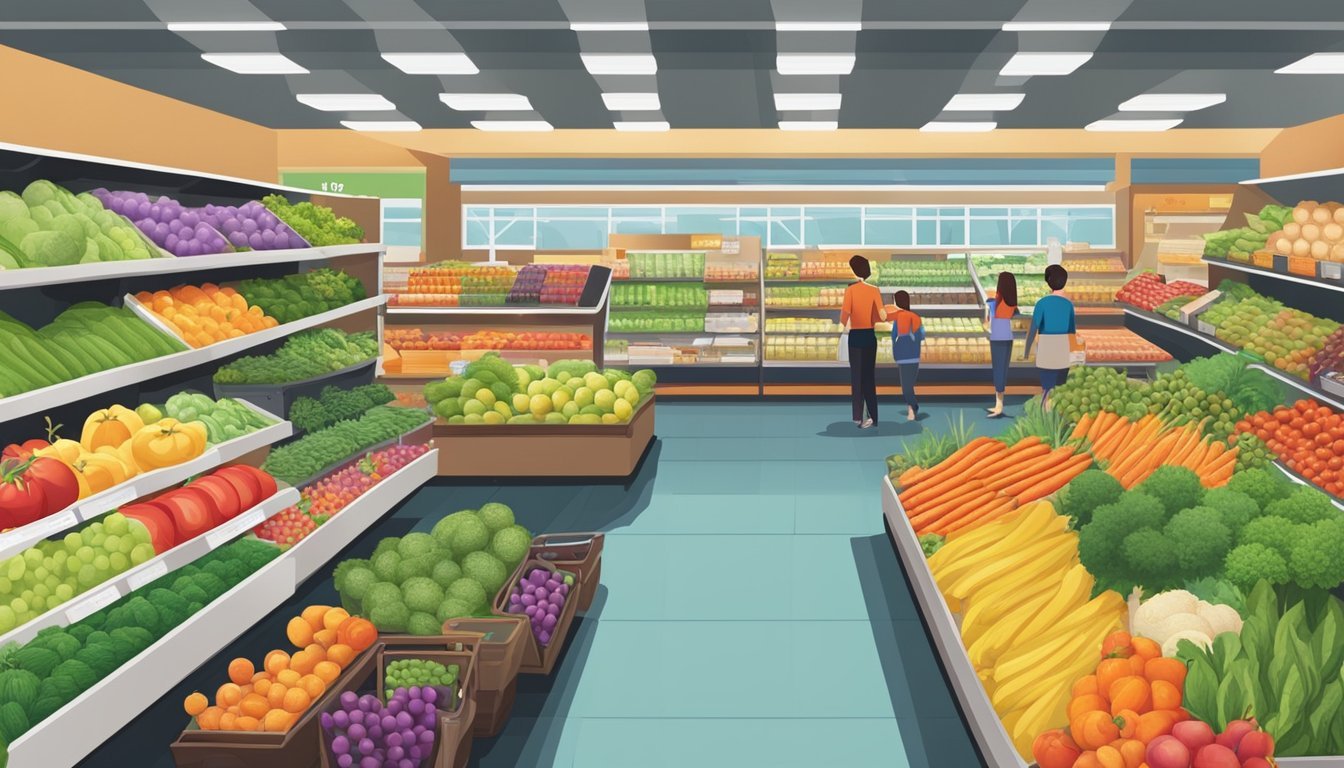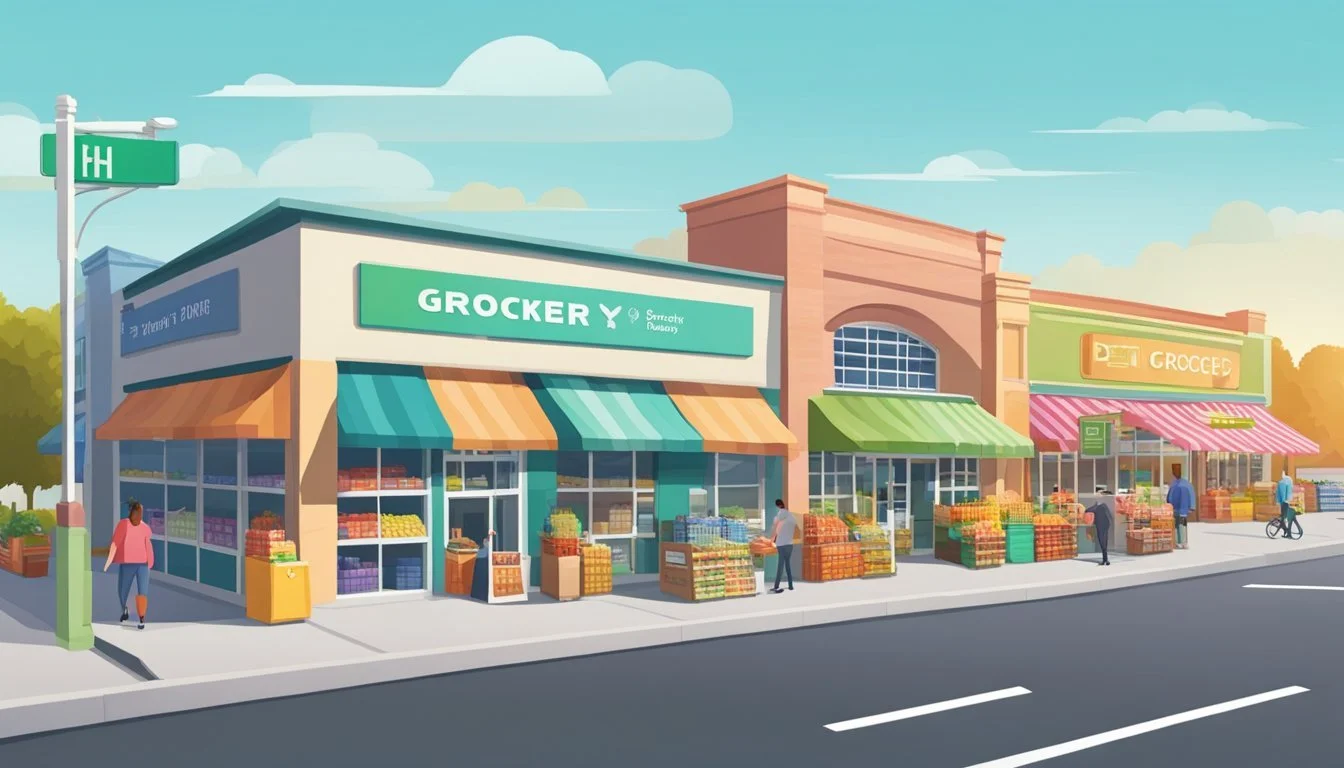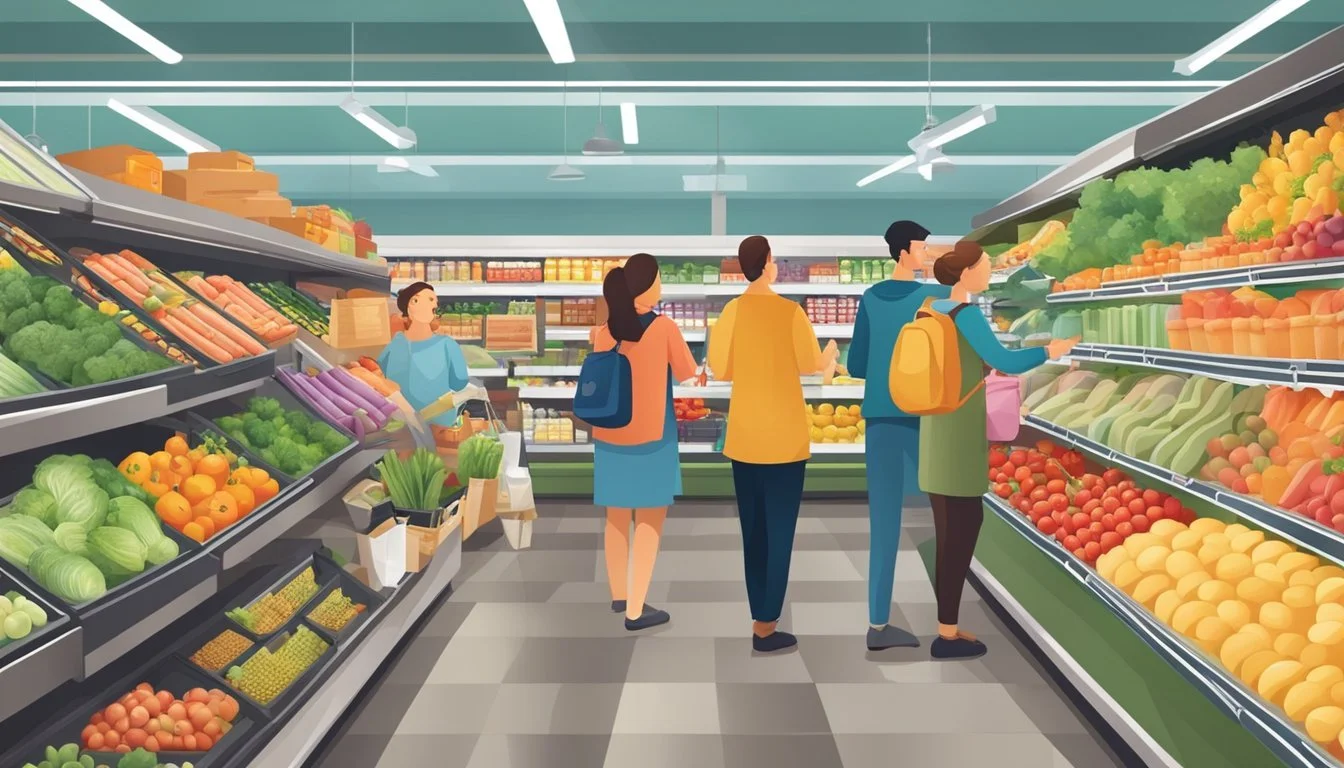Stop & Shop vs Winn-Dixie
A Comprehensive Comparison of Prices, Selection, and Service
Stop & Shop and Winn-Dixie are two prominent grocery chains serving different regions of the United States. Stop & Shop operates primarily in the Northeast, while Winn-Dixie focuses on the Southeast. Both stores offer a wide range of products, from fresh produce to household essentials.
When comparing these two grocery chains, several factors come into play. While Stop & Shop tends to have higher prices overall, Winn-Dixie often offers better deals on items like baking goods, cleaning supplies, frozen foods, and canned goods. This price difference can significantly impact shoppers' budgets and preferences.
Beyond pricing, each store has its own strengths. Stop & Shop boasts a century-long history and provides specialty items like artisanal cheeses. Winn-Dixie, on the other hand, caters to the tastes and needs of Southern customers. The choice between these two grocers ultimately depends on individual priorities, whether it's affordability, product selection, or regional familiarity.
Company Overviews
Stop & Shop and Winn-Dixie are prominent grocery chains with distinct histories and regional footprints. Both have evolved to meet changing consumer needs while maintaining their unique identities in the competitive supermarket landscape.
Stop & Shop History
Stop & Shop traces its roots back to 1914 when the Rabinovitz family opened a small grocery store in Somerville, Massachusetts. Initially named Economy Grocery Stores, it rebranded to Stop & Shop in 1946. The company expanded rapidly through the 20th century, acquiring numerous regional chains.
In 1996, Stop & Shop merged with Ahold, a Dutch international retailer. This partnership fueled further growth and modernization efforts. Today, Stop & Shop operates over 400 stores across the northeastern United States, including Massachusetts, Connecticut, Rhode Island, New York, and New Jersey.
Winn-Dixie Background
Winn-Dixie's history dates back to 1925 when William Milton Davis purchased the Rockmoor Grocery in Miami, Florida. The Davis family continued to acquire and open new stores throughout the southeastern states. In 1955, Winn & Lovett Grocery Company merged with Dixie Home Stores, creating Winn-Dixie.
The chain experienced significant growth in the following decades. However, in 2005, Winn-Dixie filed for Chapter 11 bankruptcy protection. After restructuring, it emerged as a subsidiary of Southeastern Grocers in 2012. Despite challenges, Winn-Dixie has maintained a strong presence in the Southeast.
Market Presence and Regional Stores
Stop & Shop and Winn-Dixie serve different geographical markets, with minimal overlap. Stop & Shop dominates the Northeast, operating primarily in New England and the New York metropolitan area. Its stores are typically larger format supermarkets, often featuring pharmacies and expanded departments.
Winn-Dixie focuses on the southeastern United States. It has a strong presence in Florida, Alabama, Louisiana, Georgia, and Mississippi. Winn-Dixie stores vary in size and format, ranging from neighborhood markets to larger superstores.
Both chains face competition from national brands and other regional grocers. They differentiate themselves through localized product offerings, customer loyalty programs, and community engagement initiatives.
Product Offerings and Quality
Stop & Shop and Winn-Dixie each offer distinct product selections that cater to their regional customer bases. Both chains provide a range of options across various food categories, with some notable differences in quality and variety.
Food and Grocery Selection
Stop & Shop provides a comprehensive grocery selection that meets the needs of Northeast shoppers. Their aisles stock popular national brands alongside regional favorites. Winn-Dixie, serving the Southeast, tailors its offerings to local tastes. Both chains carry staples like bread, dairy, and canned goods.
Stop & Shop often features international food sections catering to diverse communities. Winn-Dixie excels in Southern specialties and comfort foods. Both stores offer frozen meals, snacks, and beverages.
Specialty items vary between locations. Stop & Shop may have more kosher options, while Winn-Dixie typically stocks a wider range of barbecue sauces and seasonings.
Fresh Produce and Meats
Stop & Shop emphasizes freshness in its produce departments. They often source locally when possible. Winn-Dixie competes with competitive pricing on fruits and vegetables.
Both chains offer full-service meat counters. Stop & Shop tends to have a wider variety of pre-packaged meats. Winn-Dixie is known for its quality cuts and often features specials on popular grilling items.
In the seafood department, Stop & Shop may have an edge in Northeast coastal areas. Winn-Dixie typically excels in Gulf seafood offerings. Both provide fresh and frozen options.
Organic Options and Private Label Brands
Stop & Shop's Nature's Promise line offers a range of organic and natural products. Winn-Dixie's SE Grocers Essentials and Prestige lines provide value-oriented options.
Organic produce selection is generally more extensive at Stop & Shop. Winn-Dixie has been expanding its organic offerings to meet growing demand.
Both chains feature private label alternatives across most categories. Stop & Shop's store brands often receive high marks for quality. Winn-Dixie's private labels focus on providing budget-friendly options.
Specialty diet products, such as gluten-free items, are available at both chains. Stop & Shop typically offers a broader selection in this category.
Pricing and Value
Comparing prices and value between Stop & Shop and Winn-Dixie reveals key differences in everyday costs, promotional offers, and loyalty programs. These factors significantly impact shoppers' grocery bills and overall savings.
Comparison of Everyday Prices
Stop & Shop tends to have higher everyday prices compared to Winn-Dixie. A typical shopping basket at Stop & Shop costs more than at budget-friendly alternatives. Winn-Dixie focuses on competitive pricing for staple items.
Produce and meat prices at Winn-Dixie are often lower. Stop & Shop's prices on national brand products are generally higher. Store-brand items at both chains offer better value than name brands.
Regional cost differences affect pricing. Stop & Shop operates in the Northeast, while Winn-Dixie serves the Southeast. This impacts their pricing strategies and overall value proposition.
Deals and Coupons
Both stores offer weekly sales and digital coupons. Winn-Dixie frequently provides buy-one-get-one-free deals on popular items. Stop & Shop runs multi-week sales events with deeper discounts on select products.
Digital coupons are available through both stores' mobile apps. Winn-Dixie allows coupon stacking, enabling greater savings. Stop & Shop offers personalized deals based on shopping history.
Seasonal promotions are common at both chains. Holiday-themed sales and back-to-school specials provide additional savings opportunities for budget-conscious shoppers.
Loyalty Programs and Savings
Stop & Shop's Gas Rewards program allows customers to earn points on purchases and save on fuel. Their GO Rewards program offers personalized deals and cash-back options on frequently bought items.
Winn-Dixie's SE Grocers rewards program provides points on purchases, redeemable for grocery discounts. They offer bonus point events and partner with local businesses for additional savings.
Both loyalty programs are free to join. Stop & Shop's program integrates with their mobile app for easy tracking. Winn-Dixie's rewards can be linked to a phone number for convenient redemption at checkout.
Customer Experience
The customer experience at Stop & Shop and Winn-Dixie differs in several key areas. Each store has its own strengths and weaknesses when it comes to cleanliness, service quality, and convenience.
Store Cleanliness and Layout
Stop & Shop typically maintains a clean and organized shopping environment. Aisles are wide and well-lit, making navigation easy for customers. Product sections are clearly labeled, allowing shoppers to find items quickly.
Winn-Dixie stores also prioritize cleanliness, but some locations may show signs of wear. The layout can vary between stores, with some featuring a more traditional grocery format and others adopting a modern design. Produce sections in Winn-Dixie stores are often spacious and well-stocked.
Both chains regularly clean high-touch areas and provide sanitizing stations for customer use.
Customer Service Quality
Stop & Shop emphasizes training for its staff, resulting in generally knowledgeable and helpful employees. Cashiers are often efficient, and customer service desks are readily available to address shopper concerns.
Winn-Dixie is known for its friendly Southern hospitality. Staff members are usually willing to assist customers in locating products and answering questions. The personal touch at Winn-Dixie can create a more community-oriented shopping experience.
Both stores offer self-checkout options for customers who prefer a quicker exit.
Shopping Convenience and Location
Stop & Shop has a strong presence in the Northeast, with many stores located in suburban areas. They often feature pharmacies and offer online ordering with pickup and delivery options.
Winn-Dixie primarily serves the Southeastern United States, with a mix of urban and rural locations. Their stores frequently include deli and bakery sections, catering to local tastes.
Both chains provide loyalty programs that offer discounts and personalized deals. Stop & Shop's app allows for digital coupons and easy list-making, while Winn-Dixie's program includes fuel perks at participating gas stations.
Store hours vary by location, but both typically offer extended hours to accommodate different schedules.
Additional Services
Stop & Shop and Winn-Dixie offer a range of services beyond basic grocery shopping to enhance customer convenience and satisfaction. These include online shopping options and specialized product offerings.
Online Shopping and Delivery
Both chains provide online shopping platforms for customers who prefer to order groceries from home. Stop & Shop's Peapod service allows customers to browse products, create shopping lists, and schedule deliveries. Winn-Dixie offers a similar service through their website and mobile app.
Delivery options vary by location. Stop & Shop typically offers same-day delivery in many areas. Winn-Dixie provides delivery through partnerships with third-party services like Instacart in select markets.
Both stores also offer curbside pickup for online orders. Customers can place orders online and collect their groceries at designated pickup areas without entering the store.
Specialty Services and Products
Stop & Shop and Winn-Dixie feature specialty departments to cater to diverse customer needs. Both chains offer deli counters with sliced meats and cheeses, as well as prepared foods for quick meals.
Stop & Shop's bakery department produces fresh bread, cakes, and pastries daily. Many locations include in-store cafes serving coffee and light snacks.
Winn-Dixie stores often feature expanded meat departments with custom cuts and marinated options. Some locations offer specialty cheese sections with artisanal and imported varieties.
Both chains provide pharmacy services in many stores, allowing customers to fill prescriptions while grocery shopping. Some locations also offer health screenings and immunizations.
Competitive Analysis
Stop & Shop and Winn-Dixie operate in different regions, with distinct strategies and market positions. Their performance varies in pricing, product selection, and customer experience.
Stop & Shop vs. Winn-Dixie Comparison
Winn-Dixie typically offers lower prices than Stop & Shop. A basket of staple grocery items at Winn-Dixie might cost around $123.82, while the same items at Stop & Shop could be about 10% more expensive.
Winn-Dixie's SE Grocers private label provides value, often matching national brand quality at 20% lower prices. This advantage is particularly noticeable in everyday items like white bread and raw chicken.
Stop & Shop focuses on the Northeast market, while Winn-Dixie serves the Southeast. This regional specialization allows each chain to tailor its offerings to local preferences.
Both stores compete on product variety and fresh produce quality. Stop & Shop may have an edge in organic and specialty items in some locations.
Performance Against Other Retailers
When compared to industry giants like Walmart, both Stop & Shop and Winn-Dixie face tough competition. Walmart's extensive buying power often results in lower prices, with a typical grocery basket costing around $119.44.
Regional chains like Publix and Kroger also present strong competition. Publix, for instance, often outperforms Winn-Dixie in customer service and store ambiance, despite higher prices.
Discount chains such as Aldi and Lidl challenge both Stop & Shop and Winn-Dixie on pricing. These stores offer limited selections but at significantly lower costs.
In the organic and natural foods segment, Whole Foods Market and Sprouts Farmers Market provide specialized competition, particularly for Stop & Shop's higher-end offerings.
Final Recommendations
Choosing between Stop & Shop and Winn-Dixie depends on individual preferences and priorities. For shoppers seeking affordability, Winn-Dixie often offers lower everyday prices on a broad range of products.
Those who value a wide selection may prefer Stop & Shop, as it typically provides a larger variety of groceries and specialty items. Winn-Dixie's SE Grocers brand offers quality comparable to national brands at lower prices.
Location plays a crucial role in the decision. Stop & Shop serves the Northeast, while Winn-Dixie operates in the Southeast. Shoppers should consider which chain is more accessible in their area.
Both supermarkets strive to create pleasant shopping environments. They offer loyalty programs and weekly specials to enhance the customer experience.
For budget-conscious consumers:
Compare prices on frequently purchased items
Take advantage of store-brand products
Utilize loyalty programs and digital coupons
For those prioritizing selection:
Check product availability at each store
Consider the range of specialty and international foods
Evaluate the variety of fresh produce and prepared meals
Ultimately, the best choice depends on individual needs, budget constraints, and location. Shoppers may benefit from trying both stores to determine which aligns best with their grocery shopping habits.







